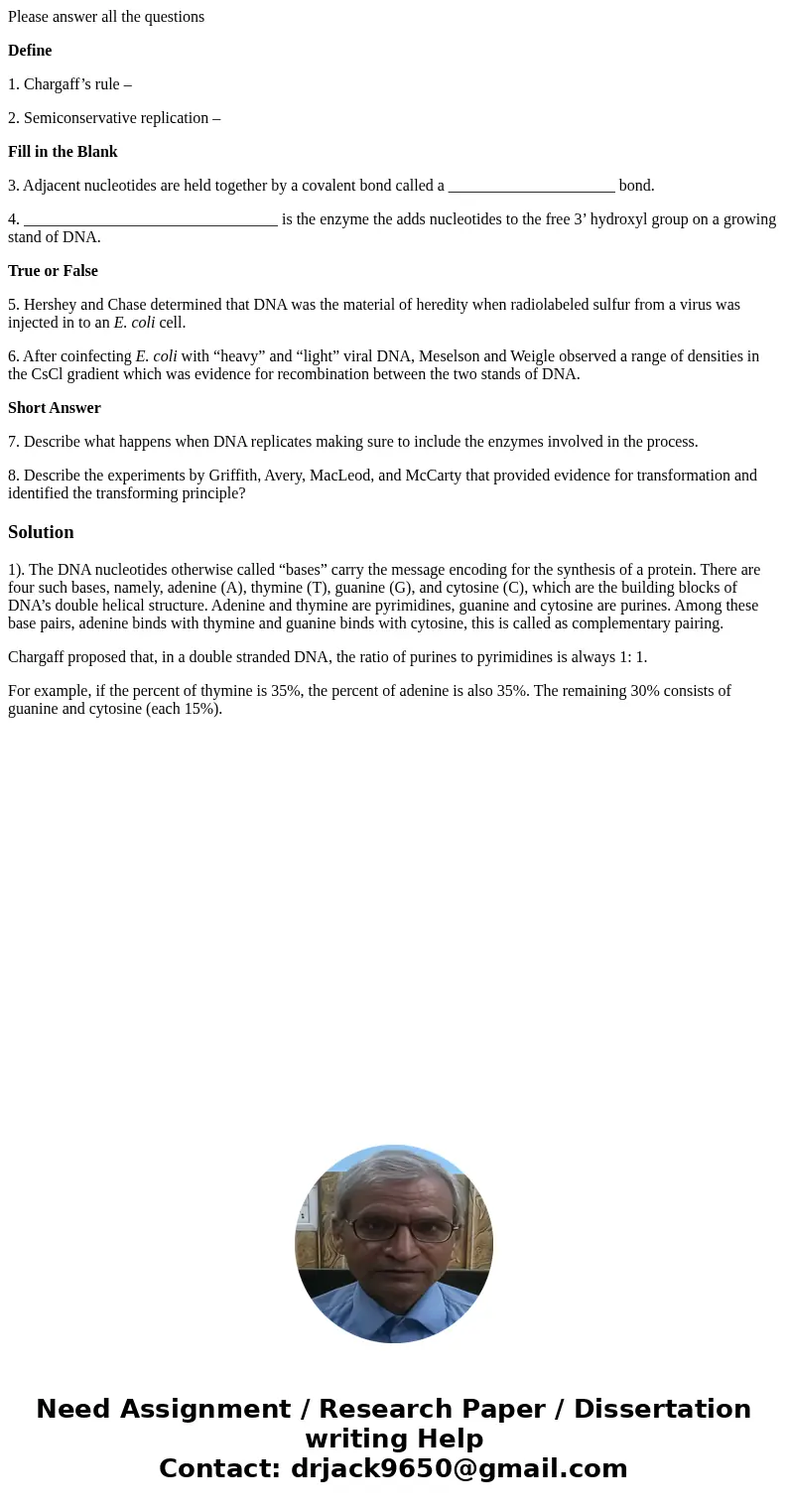Please answer all the questions Define 1 Chargaffs rule 2 S
Please answer all the questions
Define
1. Chargaff’s rule –
2. Semiconservative replication –
Fill in the Blank
3. Adjacent nucleotides are held together by a covalent bond called a _____________________ bond.
4. ________________________________ is the enzyme the adds nucleotides to the free 3’ hydroxyl group on a growing stand of DNA.
True or False
5. Hershey and Chase determined that DNA was the material of heredity when radiolabeled sulfur from a virus was injected in to an E. coli cell.
6. After coinfecting E. coli with “heavy” and “light” viral DNA, Meselson and Weigle observed a range of densities in the CsCl gradient which was evidence for recombination between the two stands of DNA.
Short Answer
7. Describe what happens when DNA replicates making sure to include the enzymes involved in the process.
8. Describe the experiments by Griffith, Avery, MacLeod, and McCarty that provided evidence for transformation and identified the transforming principle?
Solution
1). The DNA nucleotides otherwise called “bases” carry the message encoding for the synthesis of a protein. There are four such bases, namely, adenine (A), thymine (T), guanine (G), and cytosine (C), which are the building blocks of DNA’s double helical structure. Adenine and thymine are pyrimidines, guanine and cytosine are purines. Among these base pairs, adenine binds with thymine and guanine binds with cytosine, this is called as complementary pairing.
Chargaff proposed that, in a double stranded DNA, the ratio of purines to pyrimidines is always 1: 1.
For example, if the percent of thymine is 35%, the percent of adenine is also 35%. The remaining 30% consists of guanine and cytosine (each 15%).

 Homework Sourse
Homework Sourse